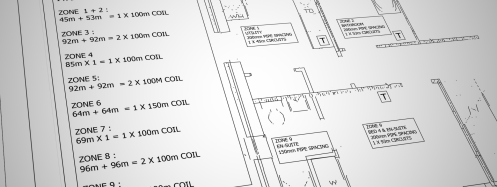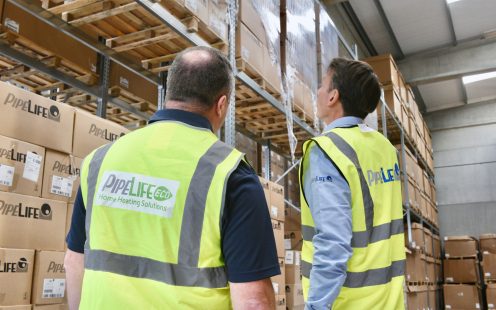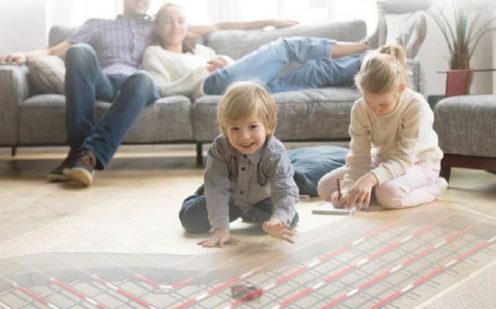Pipelife - always part of your life
Heating Systems
It might not be possible to control weather conditions, however we can take control of the temperature indoors, and the effects from cold weather outdoors. With our complete range of heating and cooling systems, you benefit from flexible, quick and quality installations that ensure the interior conditions of homes, offices and large-scale facilities feel comfortable at all times.
Facilitate flawless execution for longevity and peace of mind
Rely on equal high quality throughout your project with one-stop-shop solutions for all in- and outdoor appliances
Increase buildings' economical and ecological attributes thanks to compatibility with sustainable heat sources
Experts on hand every step of the way for local service and advice
Buildings
Products
For decades we have manufactured market leading piping solutions to service quality and durable installations for plumbing, electrical, sanitary and hygienic applications within and around buildings.
Services
Questions? Ask our experts for heating solutions!



Get in Touch
You can fill out the contact form or call us at 021 4884700.
Callback
How Does Underfloor Heating Work?
Underfloor heating is a clean and simple method for heating your home efficiently. Whilst you can probably guess the benefits of installing this type of heating in your home, what you might not be so sure of is how does underfloor heating work?
Luckily, that’s exactly what this blog is here to explain. The following jargon-free guide is here to answer in simple terms the question of ‘how does underfloor heating work?”. So, without further ado let’s take a look at how one of the most popular home heating methods actually works.
Underfloor heating works by distributing warm water throughout a circuit of pipes beneath the floor. Oil/Gas Boilers or an Air to Water Heat Pump are used to heat the water that is then dispersed across the flooring, supplying an even circulation of heat to your home. The essential difference between wall radiators and floor heating when discussing ‘how does underfloor heating work’, is the temperature of the water. Whilst a conventional radiator can be as hot as 75°C (PipelifeEco’s low-temperature radiators being an exception of course), the water pipes in underfloor heating only need to be heated to a safe surface temperature, usually between 25- 40°C.
Whilst radiators make warm air rise and gather to create hot spots near the ceiling, underfloor heating distributes the heat evenly throughout the property ensuring there are no cold spots. Low-temperature radiators can be used alongside an underfloor heating system, however, underfloor heating is required as a ground base for creating an even circulation of heat throughout your whole home. So, by discussing the question of ‘how does underfloor heating work’, you can see why it is such an efficient and cost-effective way of keeping your entire home heated evenly.
That’s the basic answer to the question of, ‘how does underfloor heating work’, however, there are a few different systems that can be used to install underfloor heating in your home.
Underfloor heat sources may include standard, combination, condensing or biomass boilers, or, heat pumps and stoves. However, the most energy and cost-efficient way to generate the low-temperature supply of water required for underfloor heating is via an air to water heat pump. Transforming energy from the outside air into heat, Pipelife’s air to water pump can reduce heating bills by up to 60% and help cut CO2 emissions by 50% compared to other traditional boiler-led heating systems. So when looking at ‘how does underfloor heating work’, it’s also important to consider which methods of installation are better for both your pocket and the environment.
You may also hear of underfloor heating being installed via electric application. How does electric underfloor heating work? Well, this is when electric heating wires or heating mats are connected to the mains electricity supply in order to generate heat. Although electric underfloor heating offers rapid installation, running costs are more expensive than water-circulated underfloor heating and it is not as efficient in heating new builds and larger spaces.
So, to round off our answer to the question, ‘how does underfloor heating work’, we’d say this method of heating effectively turns the floor into a giant (albeit, far more efficient) radiator. There are different methods of installation, however, underfloor heating that is water-circulated via an air to water heat pump is the most energy-efficient and cost-effective method for heating your home sustainably.
If you’d like more information on any of Pipelife’s underfloor heating services please don’t hesitate to get in touch with our friendly team who will be more than happy to answer any questions you may have.
What’s The Best Flooring For Underfloor Heating?
Underfloor heating is becoming an increasingly popular choice for homeowners due to its cost effectiveness and energy efficiency. With this in mind, one of the questions we get asked regularly at Pipelife Eco is “what’s the best flooring for underfloor heating?”.
When it comes to choosing the best flooring for underfloor heating, the materials that are most suitable are those that have a good thermal conductivity. This means that the floor heats up quickly but also creates a more efficient heat output. With this in mind, what are the best choices?
Tile and stone
Due to their excellent thermal properties, tile and stone can provide some of the best flooring for underfloor heating. Tile and stone have a high thermal conductivity meaning they transfer heat quickly from the pipes to the floor surface, however they also retain heat very efficiently. If you’re looking to increase the amount of time that the floor surface takes to heat up then it’s best to stick to materials that have a maximum thickness of 20mm. Ceramic, polished concrete and slate are particularly good choices due to their ability to transfer heat quickly. Marble tiles also have good thermal qualities, however can be slightly slower to heat up. When using tile or stone with your underfloor heating system always be sure to use a suitable adhesive.
Timber
When it comes to discussing the best flooring for underfloor heating, we couldn’t not mention timber. Wooden flooring is one of the most popular choices of flooring for the home and is suitable for use with underfloor heating systems. Different types of wood have their own thermal properties, making some more suitable than others. As a general rule, the denser and thinner the floorboards are, the better they conduct heat. Heating changes the moisture content of wood which is why you should always use timber that has been kiln dried to approximately 8% and so can adapt to the changing heat conditions without changing the appearance of the floor. This makes engineered timber an excellent choice as it responds well to these temperature changes.
Soft wood, parquet and bamboo flooring are also good choices, although you should always take note of the thickness and check with the manufacturer to ensure it’s suitable. Solid hardwood can often be used, however some hardwoods can be susceptible to humidity and temperature changes that can result in gapping, cupping or crowning. As with any material, when searching for the best flooring for underfloor heating you should always double check with the supplier that it is suitable.
Carpet
Carpet is definitely a comfy choice, and when chosen correctly is another suitable option for use with your heating system. You should always choose a good quality, thin carpet where the tog does not exceed 2.5. It’s also important to choose a high quality underlay as this will help ensure that the system can provide an efficient heat output.
Laminate & vinyl
Easy to lay, cost-effective and good at conducting heat, many laminates are also a good option. Vinyl is also a good thermal conductor as it heats up quickly and cools down just as quickly. However, it is worth noting that vinyl floors are usually subject to a temperature restriction of 27 °C.
What about screed?
If you’ve never heard of screed before, it’s a thin layer of concrete that covers the heating pipes under the floor. Screed provides a smooth foundation for top layer flooring to be applied and due to its thinness, encourages good heat flow. Screeds are commonly used with a range of different flooring options and it’s always a good idea to liaise with your manufacturer about helping you find the best floor screed for underfloor heating.
As you can see, if you’re considering installing underfloor heating in your home, there are plenty of different flooring options you can use to suit your home design. When it comes to finding the best flooring for underfloor heating, it all comes down to thermal conductivity, and you should always check with the manufacturer to ensure your choice of flooring is suitable for your heating system.
To learn more about the underfloor heating services we offer at Pipelife Eco, or to request and quote, please don’t hesitate to get in touch with us.









